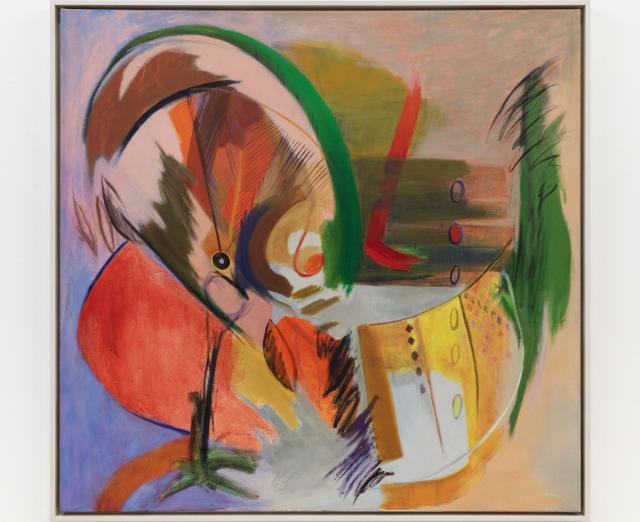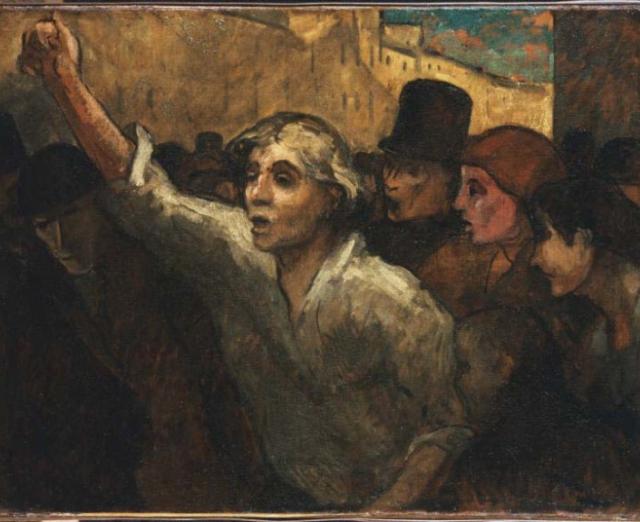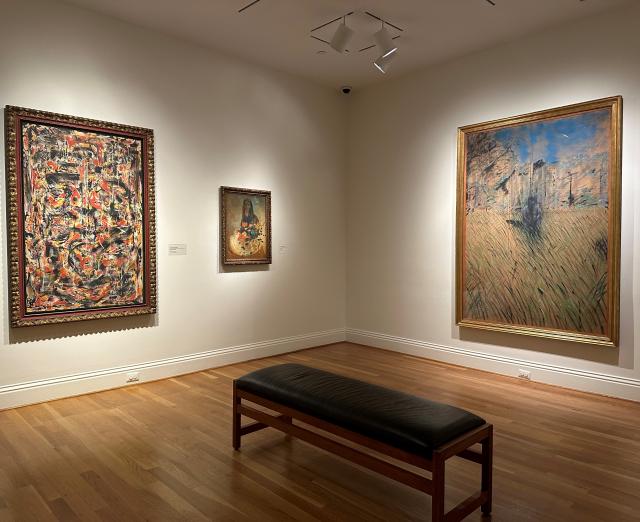Engaging the Body
Collection
Every six months, one of the Phillips’s curators selects the artworks that will be on view in the permanent collection galleries. Curator of Global Contemporary Art Tie Jojima shares how she selected the artworks in Gallery 116.
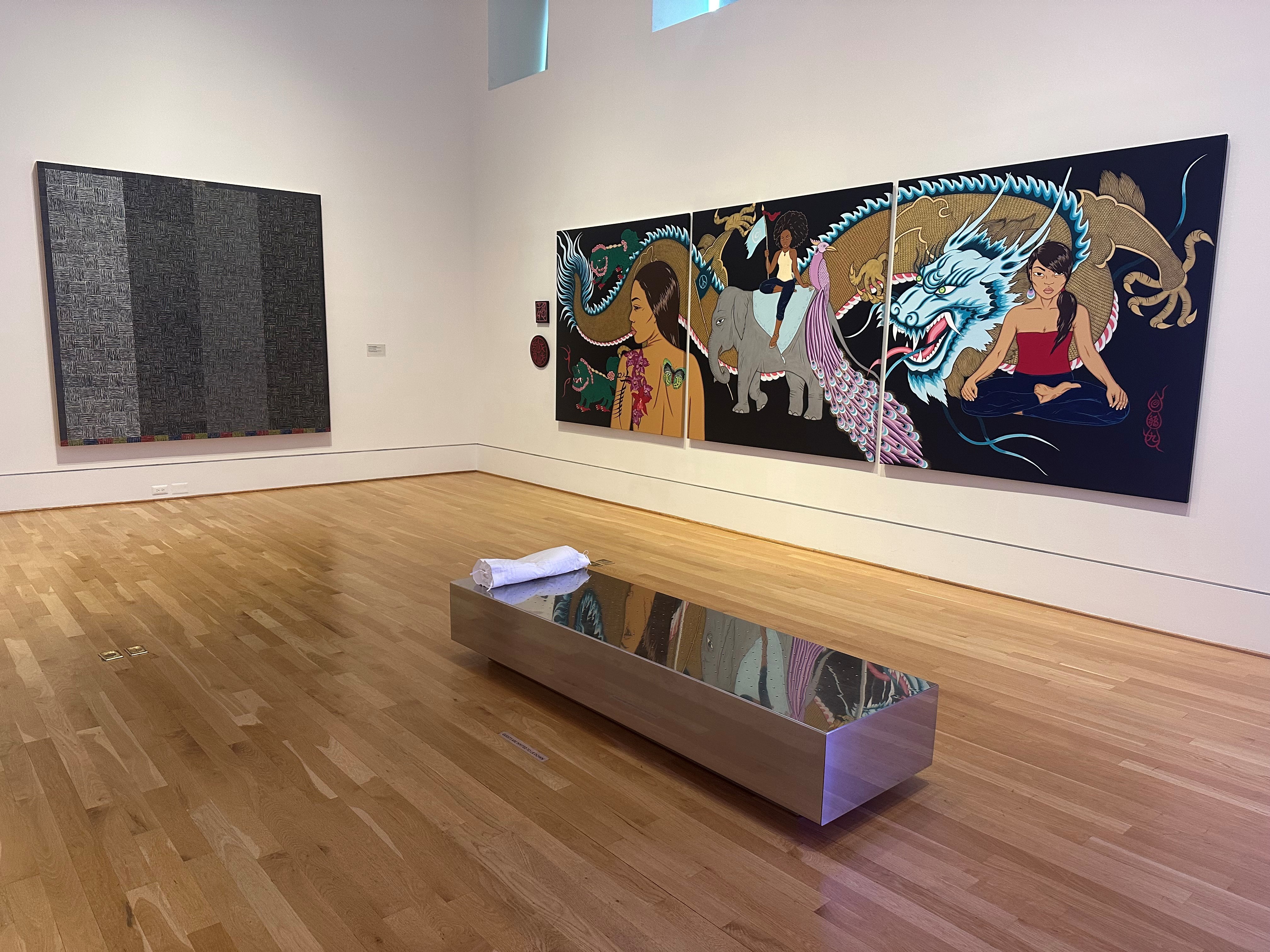
My installation in Gallery 116 brings together a diverse range of works engaging with the body in different ways, including explorations of the senses (color and smell) and bodily movement.
The very central piece in the gallery is a sculpture by Valeska Soares (Fainting Couch, from 2002), which is a stainless steel geometric structure with tiny holes on its surface and a small soft pillow. Inside the piece are real flowers—Stargazer lilies, regularly replenished by the museum—with an intense fragrance that gently diffuse into the space. Visitors are welcomed to lie down and experience the contrast between the aroma of the flowers and the sculpture’s hard and cold surface. This interactive work connects the body of the viewer to the artwork in a visceral way, allowing the viewer to engage with scent and touch and inviting a sensory experience. Important to the installation is also an artwork by Zília Sánchez (Maquinista, diptico, from 2008), one of her shaped canvases that she is known for. The verticality of this shaped artwork is a conversation with the verticality of the body. When you stand in front of it, you are standing in front of the body of an artwork.

The other artworks in the gallery also connect to the body in different ways. On one side of the gallery, we see pieces by artists associated with Abstract Expressionism, a style developed in the post-war period that is generally characterized by bold, expressive gestures. Viewers will find artworks by Joan Mitchell (August, Rue Daguerre, from 1957) and Bradley Walker Tomlin (No. 8, from 1952), both of whom are working with expressive yet relatively controlled brushwork that showcase how the body and the act of painting itself are intertwined. Also included nearby is the work of Lee Mullican (Pendulum Factor, from 1953), an artist whose approach blends Abstract Expressionism with surrealist elements, and who brought a spiritual dimension into the conversation through his explorations of mysticism.
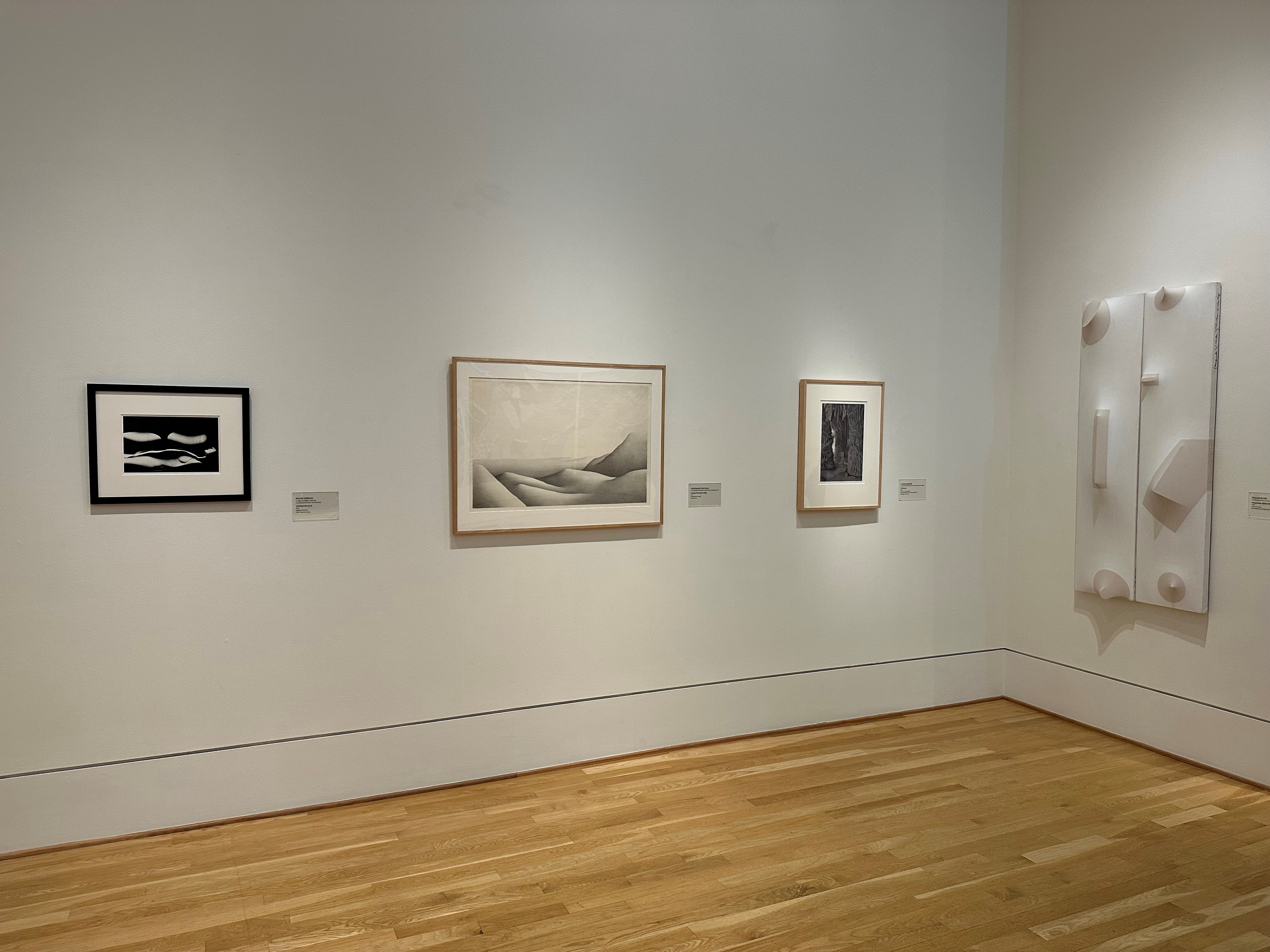
Two photographs in the gallery—one by Ralph Gibson (Untitled, Nudes, from 2012) and another by Thomas Demand (Grotesques, from 2006)—offer representations of the body and inner space. Gibson’s photograph features a nude female figure lying down with shadows covering parts of the body, while Demand’s work depicts a grotto, created entirely from cardboard and photographed to appear as a real cave. These scenes are examples of how the body and inner worlds can be represented symbolically and physically. The works complement the drawing by Constance Costigan (Inscape: Nearing the Edge, from 1977), which is a psychological landscape, evoking a sense of inward reflection.
The monumental artworks of Kate Beynon (Dragon Vision, from 2008) and McArthur Binion (DNA: Black Painting: 1, from 2015) further explore movement and the body. Beynon’s artwork combines influences from tattoo culture, comic aesthetics, and mystical symbols, drawing from her multicultural background. Her large-scale painting invites the viewer to step back and take in the entire piece. In contrast, Binion’s work encourages viewers to look up close and read his handwritten notes from an old phone book, connecting with his personal history.
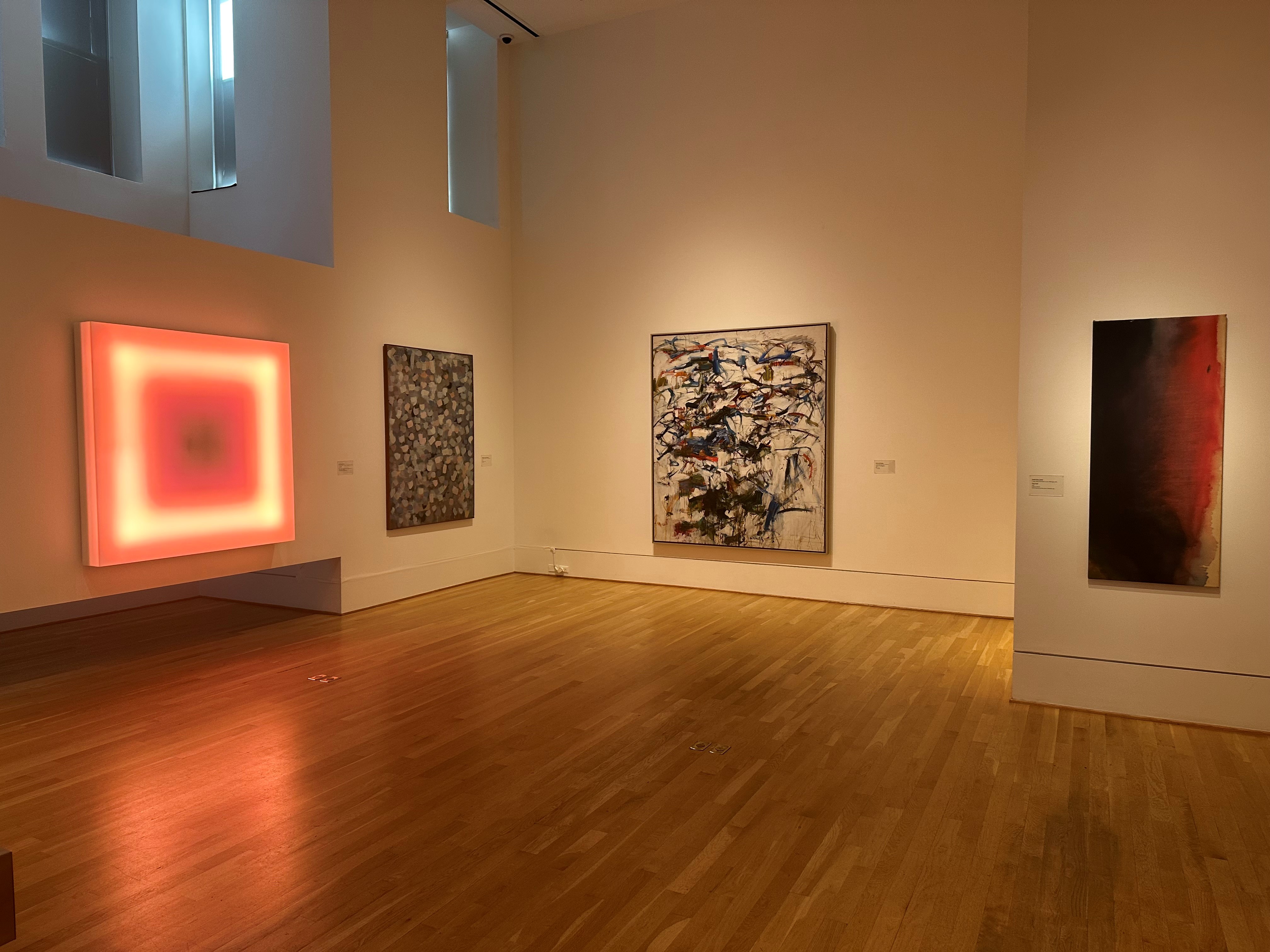
The gallery also explores the theme of color and perception of color, with works by artists like Morris Louis (Blue Column, from 1960) and Sam Gilliam (They Sail, from 1966), both of whom were interested in investigating color and created works that are about pure color. The artwork by Leo Villareal (Scramble, from 2011), a lightbox that continuously shifts color, exemplifies this theme, reflecting how our own perception of color changes according to the context in which we encounter it.
The gallery’s central theme revolves around the body: whether through the act of physically moving through the space, engaging with the artworks, or contemplating representations of the inner and outer body. As you explore the gallery, consider: how do we relate to art through our senses and physical presence?

